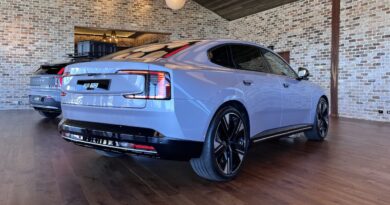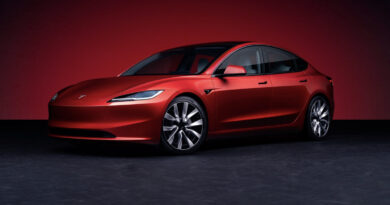Multiple battery breakthroughs! Why CATL’s three new batteries could change electric cars as we know them
The world’s largest electric car battery producer has unwrapped three pioneering all-new batteries that could be the final piece of the puzzle for mass acceptance of EVs.
Sending shockwaves throughout the battery-making industry, all are production-ready and are each heralded as gamechangers, even in the fast-evolving world of EVs.
The first is called the Freevoy Dual Power Battery that has been described as a battery within a battery, which enables it to deliver a maximum range of 1500km.
READ MORE: Game-changing battery tech is coming to Australia: New Zeekr electric car sets 10-80 per cent record with Tesla-taming charging time
READ MORE: Stronger, further, faster, cheaper, smaller! BYD execs are hyping the next generation Blade battery. Would you bet against them delivering?
READ MORE: What is a solid-state battery?
Created to consign range-extending hybrids to the history books, the CATL battery features a unique dual-core architecture that includes a main energy area and a second area that can extend the range when needed.
Hence the ‘battery within a battery’ description.
The cleverness of the new tech is each battery employs a different chemistry, blending a lithium-ion and sodium-ion tech, allowing CATL to leverage the benefits of each battery.
In cold conditions, for example, the battery switched to sodium-ion power until the power pack heats up and then switches to lithium-ion power. There’s also a Nickel Manganese Cobalt (NMC) cells to help achieve the ultra-long range.
Other new tech includes a neat self-forming anode that constructs itself during charging enhancing energy density and allowing CATL to package the Freevoy Dual Power Battery in a much smaller casing compared to conventional batteries that use pre-formed anodes.
“This technology represents a fundamental shift in how we approach electric vehicle range limitations,” said CATL.
“By combining two distinct battery technologies in one package, we’re able to optimise both high-power performance and extended range capabilities.”
If that sounds impressive, hold onto your hat as the second-generation Shenxing Superfast Charging Battery is equally significant as it combines a range of around 800km with an incredible charging speed that exceeds 1300kW.
At those speeds as much as 2.5km of range can be added every second it’s plugged in, with CATL claiming a five-minute top-up can add as much as 520km of range.
At that speed, CATL comes closer than ever before to matching the time it takes to brim a petrol or diesel’s tank.
But the problem is that currently only China offers charging infrastructure that comes anywhere close to that speed.
Which is a shame because even at freezing temperatures of -10°C charging conditions – thanks to the Shenxing battery’s chemistry – a top-up from 5-80 per cent top up still only takes just 15 minutes.
At low charge levels, CATL even says the new battery can deliver an incredible 830kW of power giving it a further edge over rivals.
The last battery to be announced is the launch of the CATL’s first mass-produced sodium-ion battery that enters production this December.
Designed to be compatible with both hybrid and electric vehicles, the new sodium battery sets new highs for energy density (175Wh/kg) for the chemistry and will provide range-extender hybrids with over 200km of EV range, while allowing regular EVs to cover a respectable 500km on a single charge.
Capable of being charged over 10,000 times in its life cycle (the equivalent of five million kilometres), the new sodium-ion batteries are far safer than traditional lithium-ion cells.
To prove it CATL has carried out torture tests that saw the cells withstand compression tests, needle penetration, electric drill penetration and even battery sawing without resulting in any fire or explosion.
In cold weather the sodium-ion batteries deliver exceptional performance and can happily charge in -30°C from 30 to 80 per cent in just 30 minutes.
Even with a 10 per cent charge, a sodium-ion powered car can still maintain a highway speed of 120km/h.
All those figures might sound a little lacklustre compared to the other two pioneering batteries, but many analysts suggest the mass-produced sodium-ion batteries could be even more significant as they will herald a new wave of affordable EVs priced well below combustion-powered vehicles.
Produced out of freely available raw materials, some analysts suggest that at the very least the sodium-ion batteries could cost between 25-30 per cent less than the cheapest lithium-ion cells, with others suggesting the price gap could be even larger.
Last year CATL produced around 38 per cent of all the high-voltage batteries used in EVs. The battery-making giant has not revealed which car-maker will use its pioneering new range of batteries first.





Catl’s batteries sound amazing, but nothing about their up coming Choco block swap stations, which could mean even quicker recharge or upgrade, without having degrade the battery or get out of the ev. Catl are planning to have 10,000 in China by the end of the decade, hopefully some stations over seas 🌊